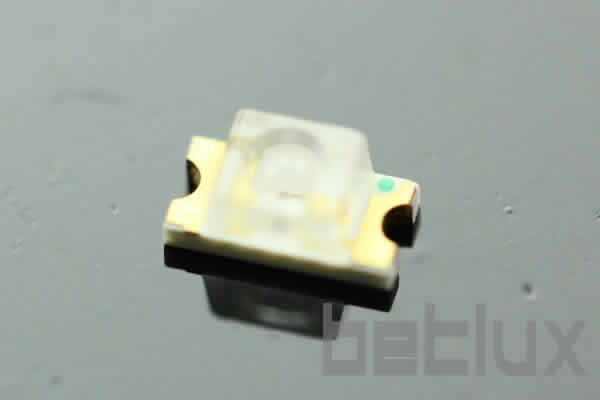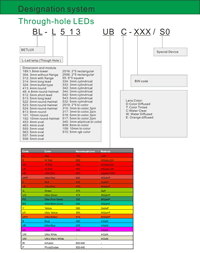Discrete LEDs package
Series No:
Weight:(g/pcs)
Dimension:(mm)
Package:
Specification:
Inquiry
Description:
Introduction
The 1206 SMD LED, especially when configured with an IR LED in a V-shape reverse package, represents a significant leap in lighting technology. Tailored to meet the sophisticated demands of modern electronics, this configuration enhances both functionality and performance. Incorporating key specifications like 940nm, it is ideal for applications requiring precise infrared transmission, such as in IR receiver modules. This article delves into the distinct features, applications, benefits, and user experiences surrounding this innovative technology.
Key Features of the 1206 SMD LED, IR LED, V Shape, Reverse Package
This specialized LED configuration is designed for optimal efficiency and versatility, making it a prime choice for electronics developers and engineers.
Compact and Efficient Design
The 1206 size is perfect for compact applications, while the V-shape allows for better emission angles, making it highly effective in applications where space and angle of light are critical. The reverse package design also enhances the ease of installation on various electronic boards.
High Performance at 940nm
Operating at 940nm, this IR LED is optimized for applications where invisibility of light is crucial, such as in remote control systems, security, and sensor applications.
Applications of the 1206 SMD LED
The 1206 SMD LED finds its place in a diverse array of applications, demonstrating its versatility and adaptability:
- Consumer Electronics: Used in remote controls, gaming devices, and personal electronic devices.
- Automotive: Serves in security systems and automated toll collection systems that require reliable IR communication.
- Industrial Automation: Utilized in machine vision systems where precise IR light is needed for the inspection and quality control processes.
Benefits of Using 1206 SMD LED, IR LED
Adopting this LED technology offers significant advantages to electronics manufacturers:
- Energy Efficiency: Consumes less power compared to other lighting technologies, which can significantly reduce the overall energy cost for end-users.
- Longevity and Reliability: Designed to last long even under rigorous conditions, reducing the need for frequent replacements and maintenance.
- Enhanced Design Flexibility: The compact and versatile design allows engineers to innovate without the constraints imposed by larger or less flexible components.
Case Studies: Success Stories with 1206 SMD LED
Case Study 1: Consumer Electronics
A leading electronics company integrated the 1206 SMD LED with IR LED in their latest line of television remote controls, significantly improving the device’s responsiveness and battery life.
Case Study 2: Automotive Security
An automotive manufacturer used the 1206 SMD LED in V-shape reverse packages for their new vehicle security system, enhancing the system’s effectiveness in low-light conditions and increasing customer satisfaction.
User Testimonials
James Corbett, Lead Product Developer: “Integrating the 1206 SMD LED into our products has allowed us to push the boundaries of what’s possible in IR applications, enhancing both the product life span and its performance.”
Maria Stein, Purchasing Manager: “From a procurement standpoint, the efficiency and reliability of the 1206 SMD LED have translated into cost savings and reduced downtime for our products.”
Conclusion
The 1206 SMD LED, IR LED in a V-shape reverse package, is more than just a component; it is a gateway to new possibilities in electronic design. Its robustness, efficiency, and versatility make it an indispensable part of the modern electronics landscape.
Call to Action
Elevate your product designs with the cutting-edge 1206 SMD LED. Contact us today to integrate state-of-the-art IR LED technology into your projects!

Features of 1206 SMD IR LED (Concave Shape, Reverse Package):
- Compact 1206 package: 3.2mm x 1.6mm x 1.4mm.
- Infrared diode with a concave shape, reverse package.
- Compatibility with automatic placement equipment.
- Wide viewing angle for versatile visibility.
- Applications include remote control, IR wireless data transmission, and security alarms.
- Package: 3,000 pieces per reel.
- RoHS compliance for environmental consideration.
Possible Applications:
- Infrared remote control systems.
- IR wireless data transmission.
- Security alarm systems.
- Proximity sensors.
- Ambient light sensing.
- Smart home applications.
- Gesture recognition systems.
- Object detection.
- Optical encoders.
- Communication devices.
- Industrial automation.
- Medical equipment.
- Consumer electronics.
- Wearable technology.
- Smart appliances.
- Automotive applications.
- Robotics.
- Customized infrared projects.


Electrical-optical characteristics:
Package configuration & Internal circuit diagram
Obtain 3D specification files
To examine all 3D specifications, save the files to your local drive and open them with your 3D application.
Lens colors in 3D files are solely for visual representation; consult the Datasheet for accurate lens type and color information.
In the event of a mismatch, the dimensions in the datasheet take precedence over the 3D specifications.
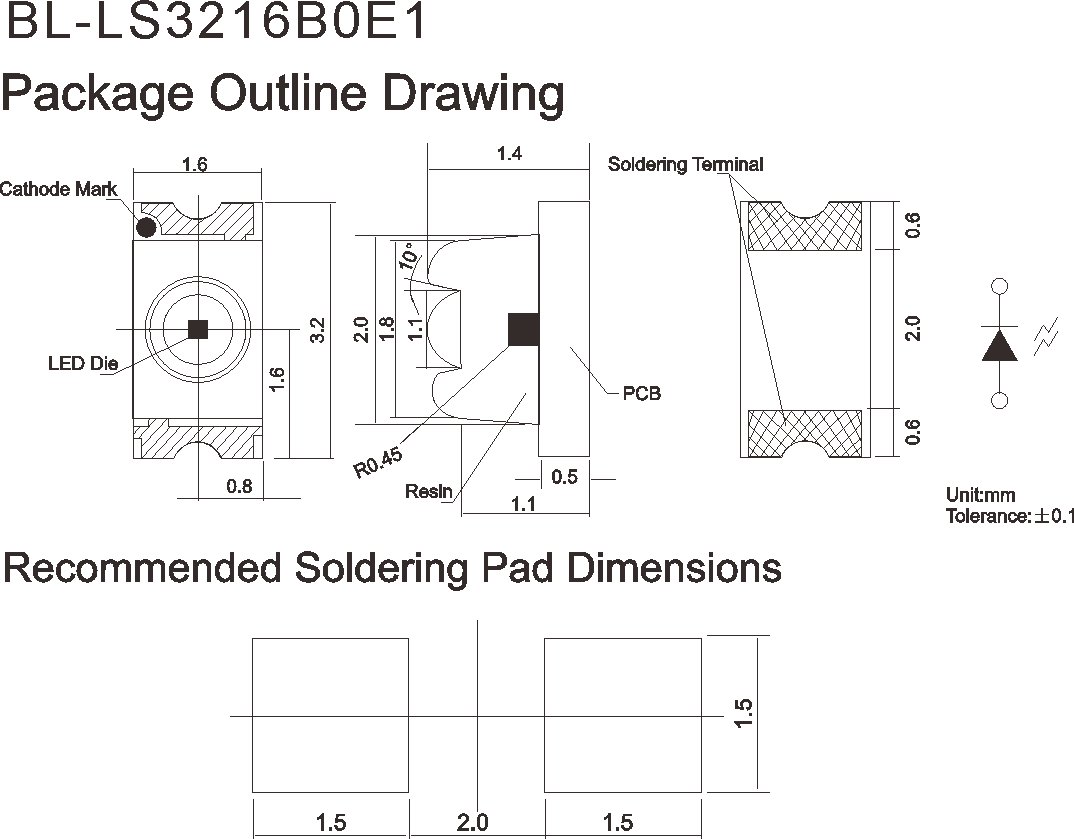
All dimensions are in millimeters(inches)
Tolerance is +-0.25(0.01″) unless otherwise note
Specifications are subject to change without notice.
Partno description:
More Information
Lens Color:
| Code | D | T | C | W | E | |
| Meaning | color Diffused | Color Tinted | Water Clear | Water Diffused | Orange diffused |
Absolute maximum ratings (Ta=25°C)
| Parameter | SR | LR | UR | UE | UY | UG | PG | BG | B | UB | UV | W | Unit |
| Forward Current I F | 25 | 25 | 25 | 30 | 30 | 30 | 30 | 30 | 30 | 30 | 30 | 30 | mA |
| Power Dissipation P d | 60 | 60 | 60 | 65 | 65 | 75 | 110 | 110 | 120 | 120 | 120 | 120 | mW |
| Reverse Voltage V R | 5 | 5 | 5 | 5 | 5 | 5 | 5 | 5 | 5 | 5 | 5 | 5 | V |
| Peak Forward Current I PF (Duty 1/10 @1KHZ) | 150 | 150 | 150 | 150 | 150 | 150 | 150 | 100 | 100 | 100 | 100 | 100 | mA |
| Operation Temperature T OPR | -40 to +80 | °C | |||||||||||
| Storage Temperature T STG | -40 to +85 | °C | |||||||||||
| Lead Soldering Temperature T SOL | Max.260+-5°C for 3 sec Max. (1.6mm from the base of the epoxy bulb) | °C | |||||||||||
Related Information
Applied for:
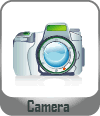
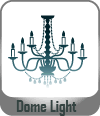
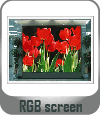
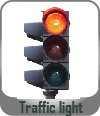
The LEDs described here are intended to be used for ordinary electronic equipment (such as office equipment,
communication equipment and household applications). Consult Betlux’s Sales in advance for information on
applications in which exceptional reliability is required, particularly when the failure or malfunction of the LEDs
may directly jeopardize life or health (such as in aviation, transportation, traffic control equipment, medical
and life support systems and safety devices).
CAUTIONS for Through-Hole LED Lamps
1. Application
The LEDs described here are intended to be used for ordinary electronic equipment (such as office equipment, communication equipment and household applications). Consult Betlux’s Sales in advance for information on applications in which exceptional reliability is required, particularly when the failure or malfunction of the LEDs may directly jeopardize life or health (such as in aviation, transportation, traffic control equipment, medical and life support systems and safety devices).
2. Storage
The storage ambient for the LEDs should not exceed 30℃ temperature or 70% relative humidity. It is
recommended that LEDs out of their original packaging are used within three months
For extended storage out of their original packaging, it is recommended that the LEDs be stored in a sealed
container with appropriate desiccant or in a desiccator with nitrogen ambient.
3. Cleaning
Use alcohol-based cleaning solvents such as isopropyl alcohol to clean the LED if necessary
4. Lead Forming & Assembly
During lead forming, the leads should be bent at a point at least 3mm from the base of LED lens. Do not use
the base of the leadframe as a fulcrum during forming.
Lead forming must be done before soldering, at normal temperature.
During assembly on PCB, use minimum clinch force possible to avoid excessive mechanical stress.
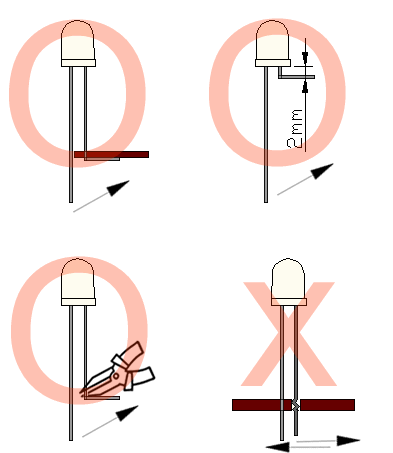
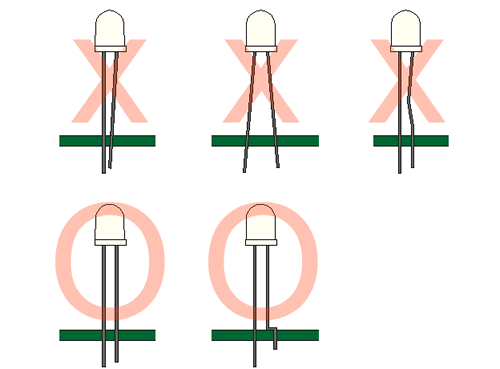
Soldering
When soldering, leave a minimum of 2mm clearance from the base of the base of the lens to the soldering point. Dipping the lens into the solder must be avoided.
Do not apply any external stress to the lead frame during soldering while the LED is at high temperature.
Recommended soldering conditions:
| IR Reflow Soldering (for SMD display) | Wave Soldering | Soldering Iron | |||
| Pre-Heat | 150-180°C | Pre-Heat | 100°C Max. | Temperature | 300°C Max. |
| Pre-Heat Time | 120sec Max. | Pre-Heat Time | 60sec Max. | ||
| Peak Temperature | 260°C Max. | SolderWave | 260°C Max. | Soldering Time | 3sec Max.(one time only) |
| Soldering Time | 10 sec Max. | Soldering Time | 5sec Max. | ||
Note: Excessive soldering temperature and/or time might result in deformation of the LED lens or failure of the LED
ESD(Electrostatic Discharge)
Static Electricity or power surge will damage the LED.
Suggestions to prevent ESD (Electrostatic Discharge):
n Use a conductive wrist band or anti-electrostatic glove when handling these LEDs
n All devices, equipment, and machinery must be properly grounded
n Work tables, storage racks, etc. should be properly grounded
n Use ion blower to neutralize the static charge which might have built up on surface of the LED’s
plastic lens as a result of friction between LEDs during storage and handling
ESD-damaged LEDs will exhibit abnormal characteristics such as high reverse leakage current,
low forward voltage, or “no light on” at low currents. To verify for ESD damage, check for “light on”
and Vf of the suspect LEDs at low currents.
The Vf of “good” LEDs should be>2.0V@0.1mA for InGaN product and >1.4V@0.1mA for AlInGaP
product.

Drive Method
An LED is a current-operated device. In order to ensure intensity uniformity on multiple LEDs connected in
parallel in an application, it is recommended that a current limiting resistor be incorporated in the drive circuit,
in series with each LED as shown in Circuit A below.
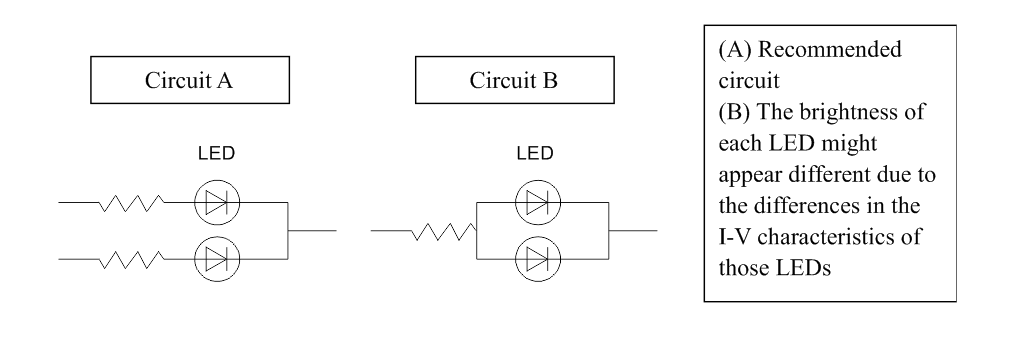
When selecting power for LED systems, it’s essential to understand several key parameters to ensure safe operation, longevity, and optimal performance. Here are some steps and considerations for LED power selection:
- Determine the Forward Voltage (Vf) of the LED(s):
Each LED has a forward voltage, which is the voltage at which the LED operates when the current is flowing through it. This value can typically be found in the LED’s datasheet.
- Determine the Forward Current (If) of the LED(s):
The forward current is the current at which the LED is designed to operate. Running an LED at higher than its rated current can reduce its lifespan and increase the heat it produces.
- Decide on the Configuration:
Series Configuration: When LEDs are connected in series, the forward voltages add up, but the current remains the same.
Parallel Configuration: When LEDs are connected in parallel, the forward voltage remains the same, but the currents add up. This configuration can be risky because if one LED fails or has a slightly lower forward voltage, it can cause the other LEDs to draw more current.
Calculate Total Power Requirements:
Power (W) = Total Forward Voltage (V) x Total Forward Current (A)
For example, if you have three LEDs connected in series, each with a forward voltage of 3V and a forward current of 20mA, the total power requirement would be:
Power = (3V + 3V + 3V) x 20mA = 9V x 0.02A = 0.18W
- Select an Appropriate Power Supply:
- Voltage Rating: The power supply voltage should match or slightly exceed the total forward voltage of your LED configuration.
- Current Rating: The power supply’s current rating should meet or exceed the total forward current of your LED configuration.
- Safety Margin: It’s a good practice to select a power supply that can provide at least 20% more power than your calculated requirement. This ensures the power supply isn’t operating at its maximum capacity, which can extend its life and ensure safer operation.
- Consider Additional Features:
- Dimming Capability: If you want to control the brightness of your LEDs, choose a power supply with dimming capabilities.
- Overcurrent and Overvoltage Protection: To protect your LEDs, select a power supply with built-in protection mechanisms.
- Thermal Management: Ensure that the power supply has adequate cooling, especially if it will be enclosed or in a location with limited airflow.
- Regulation and Efficiency:A power supply with good regulation will maintain a consistent voltage output despite variations in the load. High efficiency ensures minimal power is wasted as heat.
- Physical Size and Form Factor:Depending on where you plan to place the power supply, its size and shape may be critical factors.
In summary, when selecting power for LED systems, understanding your LED’s requirements and the configuration you plan to use is essential. Then, pick a power supply that meets those needs with some added safety margin, keeping in mind any additional features or constraints relevant to your project.
Here are some well-regarded brands in the industry:
- Mean Well: One of the most recognized brands in the LED power supply industry, Mean Well offers a wide range of products suitable for both indoor and outdoor applications. Their units often come with features like overcurrent protection, dimming capabilities, and high efficiency.
- Tridonic: A global leader in lighting technology, Tridonic offers LED drivers and power supplies that cater to various lighting solutions, from simple setups to advanced smart lighting systems.
- Philips Advance Xitanium: Philips is a well-known brand in the lighting industry, and their Xitanium series of LED drivers are known for reliability and performance. They cater to both indoor and outdoor LED applications.
- Osram: Another giant in the lighting industry, Osram offers a range of LED drivers and power supplies suitable for various applications, including architectural and street lighting.
- LIFUD: Specializing in LED drivers, LIFUD is known for its high-quality products that cater to both commercial and residential LED lighting solutions.
- MOSO: This brand offers a variety of LED drivers, especially for outdoor and industrial applications. Their products are known for durability and performance.
- TDK-Lambda: With a history in power electronics, TDK-Lambda offers a range of power supplies and LED drivers suitable for various applications, emphasizing reliability and advanced features.
